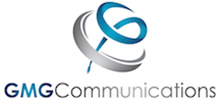Let’s face it, most businesses rely on their IT Systems to run their daily operations. Whether it is email, eCommerce, accounting or other “line of business” applications, SMBs need the same up time and availability as a large business. Most of the time everything hums right along. When PC’s crash or the network crawls, business can come to a grinding halt. Being proactive with your IT Services can make all the difference in the world in getting up and running again.
Here are some tips to ensure you get back up and running quickly:
Start off by having all your ducks in a row. When things go wrong, make sure you know who to call. Don’t wait until things are broken to find an IT Service Provider or Computer Repair Company. Establish a Service Level Agreement (SLA) with a reputable IT Service Provider in advance. By having an agreed upon response time and rate schedule, you can ensure a rapid response to your problem that works by your schedule. In many cases you can pay by the hour or by the ticket. You may even be able to include unforeseen computer repairs as part of a fixed fee IT Managed Service Agreement. By having a service level agreement in place, you will save time and money when things go wrong.
Also consider having both local and off-site backups of your data. When we thing about backup we typically think about a disaster, theft or other systems failure. Any way you look at it, backup is all about recovery. A local backup can help you find lost files or recover corrupted data quickly, but sometimes your local backup may not be enough. In addition to your local backup consider having off-site data storage available as well. Remote backup may not restore as quickly due to bandwidth limitation. However, in case of a fire, earthquake, hurricane or other disaster, your remote backup will come in handy. Also, IT Managed Service Provider ITMSP may be able to restore or rebuild your files or device from a remote backup without having to go on-site. This can not only get you up and running quicker, but it also may save money by avoiding an on-site visit.
Keeping your systems in compliance is a good way to avoid problems before they happen. As they say, a once of prevention is worth a pound of cure. Establish solid IT policies and always proactively maintain your systems. Ensure that your machines always are up to date with the latest security patches, defragment your hard drives periodically and clear your temporary directories to keep systems running at optimal performance.
Make sure you are in control of your IT environment by having a trusted IT Service Advisor recommend what is right for your business
